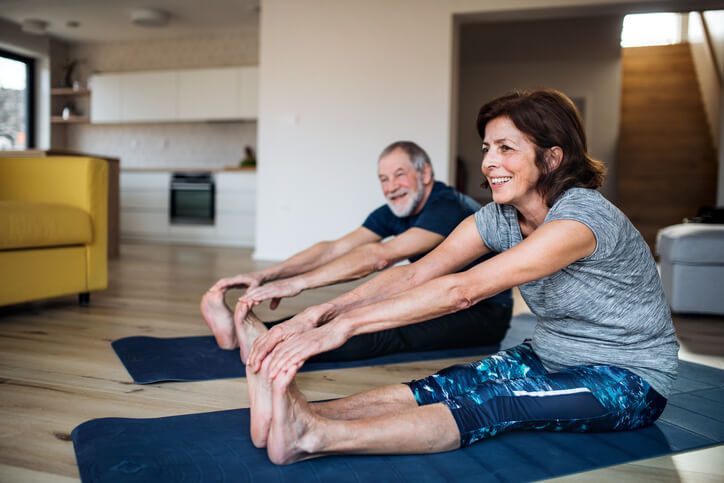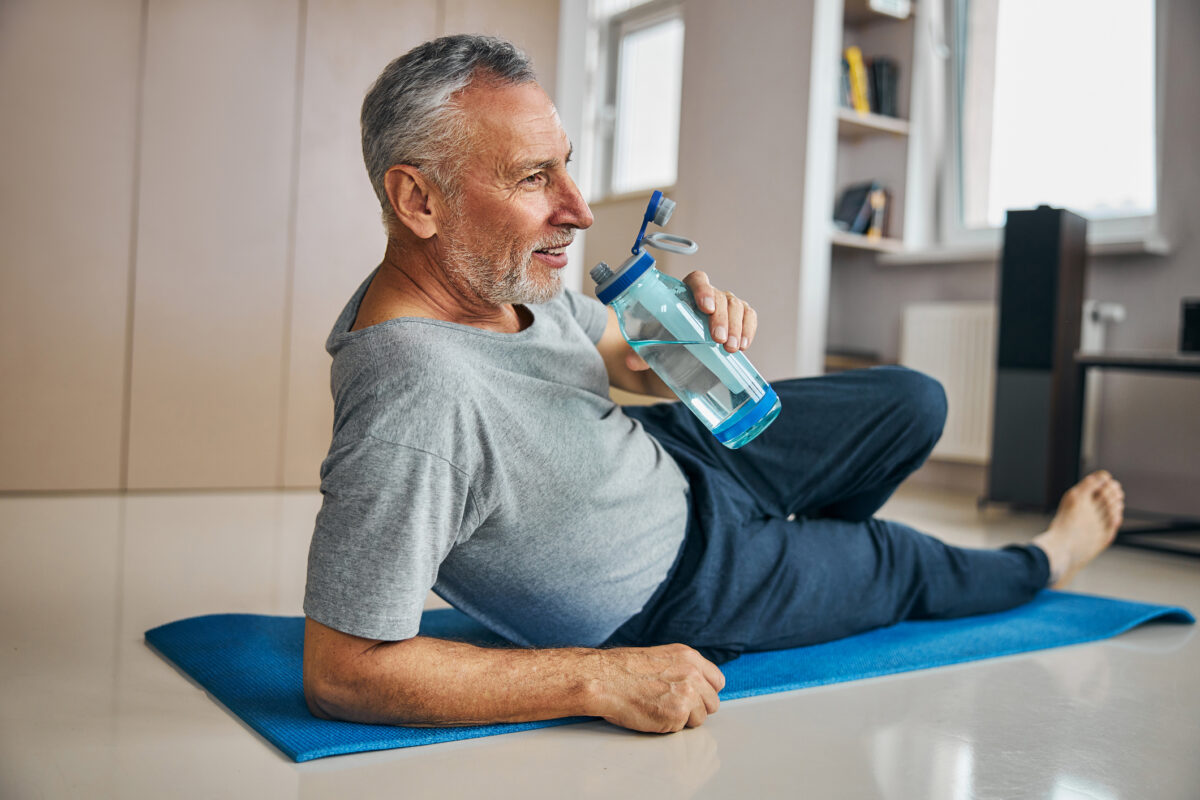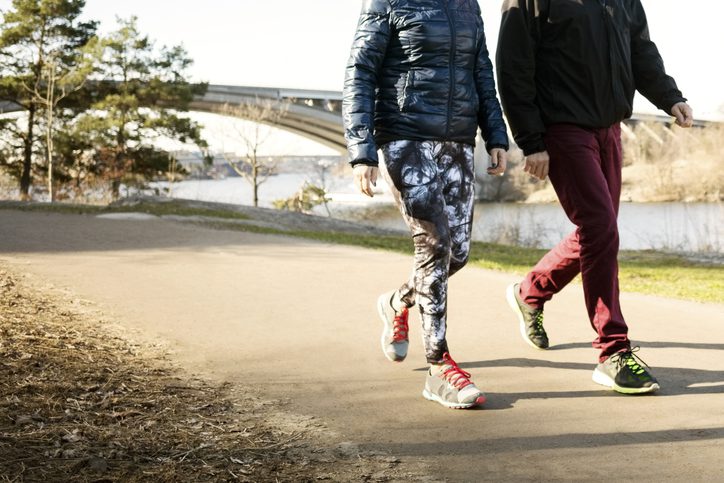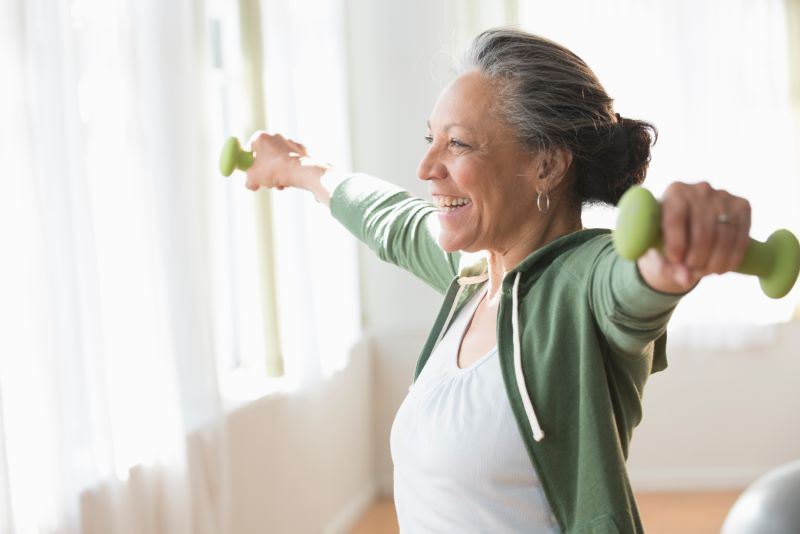You’re rightfully proud of your daily trip to the gym, even on your busiest days.
But why do your joints feel so stiff? Why do you get winded going up the stairs? Why does your back ache?
The answer boils down to biology.
“The electronic and technological revolution has changed how much we move every day,” says Galina Denzel, co-author of “Eat Well, Move Well, Live Well.” “More things are coming to us…and that alone has changed how much movement there is in our days. We are a species that is programmed to conserve energy so [the lack of movement] impacts our body.”
One poll found that most people sit for 56 hours a week. When you compare that to the possible 3 ½ to 7 hours we spend in the gym each week, it’s obvious why our bodies feel like they’re deteriorating.
But there’s a way to reverse the damage: move.
“If you define movement as going to the gym, that’s not an accurate definition,” says Denzel. “Movement is everything that requires you to change position.”
The good news is that doesn’t necessarily mean more trips to the gym. Just standing and stretching, or crossing your legs and shifting your body weight can reverse the impact of a sedentary lifestyle.
The bottom line: small moves equal major health benefits.
But while staying active is good, completely switching gears may not be.
Bowman cautions having an all-or-nothing mindset. Some people are so intent on beating the “sitting is the new smoking” idea that they stand all day. That can cause issues, too, such as varicose veins, torn joints and even cardiovascular problems.
The key is finding the right balance. Linda Melone, a certified trainer and founder of Ageless After 50, recommends standing up and walking around every hour.
Try these at-home exercises suggested by fitness experts to move toward better health.
1. Tone Your Triceps
Melone: Hold a water bottle, stapler or other object that provides weight resistance. Sit or stand straight and, grasping the object with one hand, bring it up and overhead with your elbow pointed toward the ceiling and “weight” down toward the center of your back. Keep your elbow pointed up as you slowly raise and lower the object. Repeat 12 to 15 times, then switch arms.
2. Improve Your Foot Circulation; Build Lower Leg Muscles
Denizen: Stand with your feet hip-width apart and place a tennis ball under your foot. Roll the ball back and forth while placing a significant amount of your body weight over the ball. Do that for 2–3 minutes per foot or as long as you find it enjoyable.

Note: Massage and move your feet as often as possible. And avoid tight, uncomfortable shoes.
3. Firm Your Abs
Melone: Sit up straight in your chair, feet flat on the floor. Keeping knees bent and in position, alternately lift one leg and then the other an inch or two off the ground, focusing on using your abdominal muscles to do the work. For a bigger challenge, place both hands on your desk in front of you and lift both legs at once. Repeat 15 times or until you lose your form.
4. Stretch Your Spine

Bowman: Stand facing a wall, countertop, or back of a chair. Place both hands on the wall (or whatever you’ve chosen), slowly back up until your arms are fully outstretched, lowering your chest through your arms. Keep your legs straight and your weight back toward your heels so you can easily wiggle your toes. Relax your head and neck.
5. Stretch Your Body
Bowman: Think of how gymnasts throw their arms in the air and stick out their chests at the end of routines. You will do the same thing here as you reach your arms up until you can touch the wall above the doorway. Think of how the gymnasts lower their rib cages while extending their arms. Mimic that move.
If you can’t reach both arms up high enough, try extending one arm at a time, walking your fingers up the wall as high as possible.
Lowering your ribs will intensify the motion in your arms and shoulders.
Repeat both sides.
Note: Check your elbows. Do they always point outward? Try a few with your elbows pointing straight ahead and see how this movement changes the stretch in the arms, shoulders, and torso.
Do this every time you go through a doorway, holding a few seconds each time.
6. Build Lower Body Strength

Melone: Stand with feet shoulder width apart, arms stretched out in front or crossed on your chest. Lower your hips toward your seat as if about to sit down, gently touch and then slowly rise back to starting position. Repeat 12 to 15x.
7. Strength Your Back
Melone: Sit up straight and grip the front of your desk with your hands shoulder-width apart. Push yourself away from your desk by rolling your chair backward, then slowly pull yourself back up by squeezing your shoulder blades together and focusing on using your back muscles to do the work (avoid shrugging). Repeat 12 to 15 times.
8. Build Lower Body Flexibility
Bowman: Hold on to a doorknob. Place your feet at hip width with toes pointing straight. Start to sit back into a squat. Don’t keep your back straight. Instead, maintain the curve of your spine and allow your hip joints to move. Ideally, keep your upper legs parallel to the floor and allow your glutes to support you. To stand back up, push off through your heel.
(Denizen said you can also do this holding onto a counter or other solid surface.)
9. Strengthen Your Quadriceps
Melone: Sit up straight in your chair and tighten your abdominals. Start with both feet flat on the floor, knees at a right angle. Slowly extend one leg out in front of you; hold for a few seconds, then squeeze your quadriceps (the large muscles in the front of the thighs), and return to the starting position (without resting between reps) until you complete 12 to 15 reps. Repeat with the opposite leg.
10. Strengthen Your Legs
Bowman: Stand up, barefoot, and move one leg behind you, tucking the toes down and keeping the torso upright (it is common to move the pelvis or upper body forward).
Note: This move can cause foot cramps. To avoid them, try doing the exercise more often, but for a shorter number of repetitions. Also, to reduce the load, try not to stretch the leg back too far. For a greater stretch, step farther back with your stretching foot.
Conclusion
Yes, most of us spend the day sitting, but easy-to-do exercises — no special clothes needed — can help you build muscle and improve flexibility and circulation.







Stimulates my desire to become healthier on an everyday basis. Easy to incorporate into my daily life. Thank you.
Very interesting!
I am not sending my name or email since I am super careful re cyber security. But I have not been careful enough about doing exercise since I now for 2 months have been self quarantined…and at 85, though still seemingly healthy, I know I must start to add exercise to my daily routine if I want to stay limber and physically balanced as I am now. Your exercises are just perfect since I do not want to do real strenuous exercises at 85 -almost 86 – especially since I recently stopped running with the dogs around our street since there are too many others walking there constantly and I have read that the corona virus hangs on the too many dust particles in the air for about 20 minutes! I could be running right into them or pick them up on my shoes. So I am so grateful for what you sent me – THANK YOU – THANK YOU! jb fairfield ct
I couldn’t follow the first exercise directions – pics?
Thank you. I’m 84 and have had injuries from doing what coaches at the gym advised and from trying too hard to stay “fit”. Your gentler approach gives me hope and has removed a lot of guilt feelings from my soul.